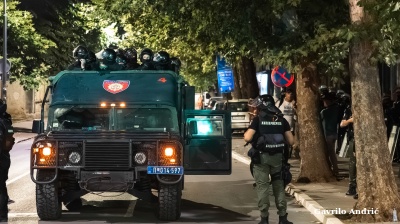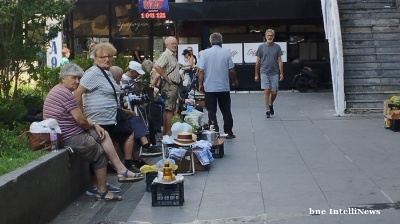European Commission President Ursula von der Leyen is pushing for closer ties with Asia as part of a new EU trade strategy to offset the growing trade war risks with the Trump administration and reforming the global trade system.
Thanks to US President Donald Trump’s Liberation Day tariffs, Europe is facing tariff hikes of as much as 50% starting on July 9 if no new trade deal is reached. But Brussels has a plan B: look east for new partners.
European Commission President Ursula von der Leyen has been wooing the Comprehensive and Progressive Agreement for Trans-Pacific Partnership (CPTPP), a 12-nation Asian trade bloc, as part of efforts to promote “rules-based international trade,” Politico reported on June 29.
Together, the EU and CPTPP represent 39 countries and approximately 30% of global trade. Von der Leyen has said the initiative is intended to “show to the world that free trade with a large number of countries is possible on a rules-based foundation.” She added that such a coalition could lay the groundwork for reforming or even replacing the 30-year-old and now dysfunctional World Trade Organization (WTO), which has succumbed to institutional gridlock.
Both Russia and China had the same idea as part of their plan to build a multipolar world order and Russian President Vladimir Putin’s big bet on the Global South Century. And he has had some success, reorienting Russia’s entire oil exports to Asia in a mere four months following the imposition of the EU’s twin oil sanctions at the end of 2022.
And the Global South countries are increasingly signing up to the Sino-Russian project. In a symbolic shift, Indonesia – Asia’s fourth largest country – joined the BRICS+ in January after two years of dithering. Indonesian President Prabowo Subianto notably skipped the recent G7 summit in Canada and instead attended Russia’s St. Petersburg International Economic Forum (SPIEF) in June as Putin’s guest of honour.
Russia and China have also made deep inroads into Africa, leveraging long standing post-colonial grievances.
But the EU is not coming to the idea of more Asian trade from a standing start. In 2024, total EU-ASEAN goods trade turnover reached approximately €258.7bn, with bilateral trade between the EU and Indonesia alone totalling around €27.3bn ($29.3bn) – almost double Russia’s trade turnover with Indonesian in that year.
The EU is also still dependent on trade with China, with goods trade turnover between the two reaching €730bn ($782bn) in 2024 – with the EU running a whopping trade deficit of €305bn with the Middle Kingdom.
China remains the dominant player in its own backyard and is the biggest trade partner with every country in the region: trade with ASEAN countries was valued at $982.3bn in 2024, accounting for 15-16% of Beijing’s total foreign trade. Russia, by contrast, remains far behind. While Russia-ASEAN trade reached $15.8bn in 2023 according to ASEAN, Russia’s own data puts that figure at about $22bn. Trade with Indonesia specifically stood at just $4.3bn in 2024, despite an 80% increase over the past five years.
To move forward, EU trade officials have proposed that all 39 EU and CPTPP countries agree to a “Standstill Agreement” to maintain current market openness and bypass the dysfunctional WTO completely, while broader trade negotiations proceed, Politico reported.
The US was in trade talks with the CPTPP under former President Barack Obama, but the agreement was abandoned by the Trump administration in 2017. In comments at an EU summit last week, von der Leyen made it clear that Brussels was not interested in bringing Washington into the new trade agreements.
Features

South Korea, the US come together on nuclear deals
South Korean and US companies have signed agreements to advance nuclear energy projects, aiming to meet rising data centre power demands, support AI growth, and strengthen the US nuclear fuel supply chain.

World Bank seems to be having second thoughts about Tajikistan’s Rogun Dam
Ball now in Dushanbe’s court to justify high cost.

INTERVIEW: From cinema to Serbian police cell in one unlucky “take”
An Italian software engineer caught in Belgrade’s August protests recounts a night of mistaken arrest and police violence in the city’s tense political climate.
_Cropped_1756210594.jpg)
Turkey breaks ground on its section of the TRIPP rail corridor
Turkish project would help make TRIPP the go-to route for Middle Corridor freight.




